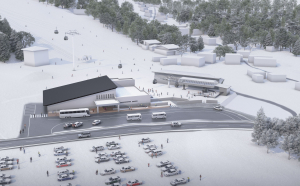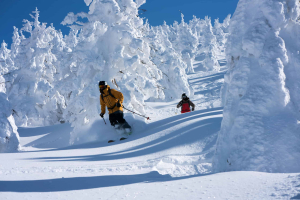Out The Back of Beyond: Skiing the Roof of Victoria
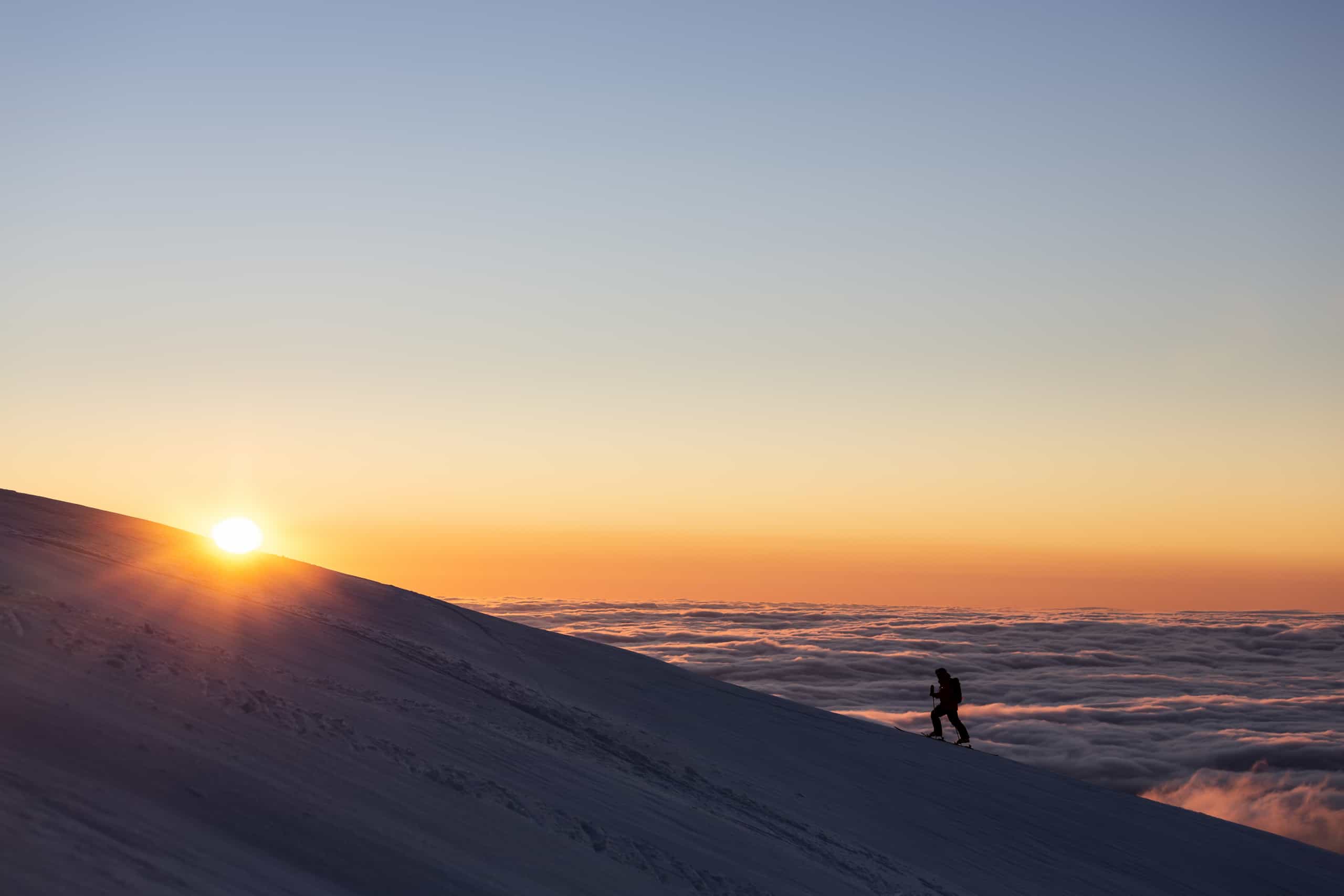
Mountainwatch | Words Drew Jolowizc. Photos: Dylan Robinson
Without a shadow of doubt the last 18 months has been trying for our outdoor communities and society as a whole. The Covid-19 Pandemic has severely impacted life as we knew it. Perhaps a life that was taken for granted but never will be again. Lockdown, out of lockdown, back in lockdown and then out of lockdown.
A revolving cycle of uncertainty has ensued, mixed with frustration and glimpses of hope. For those with a passion for outdoors, the best laid plans have been made, postponed, cancelled and then re-made to fit with the current health guidelines.
Winter in the Australian backcountry didn’t escape the chaos and unpredictability of the virus. National Park Closures and five-kilometre exercise bubbles were in place for large portions of the season. From my kitchen window at Hotham, I look straight out to Mt Feathertop’s East Face with Mt Bogong not far off to the North-East. For much of winter it was a case of look but don’t touch.
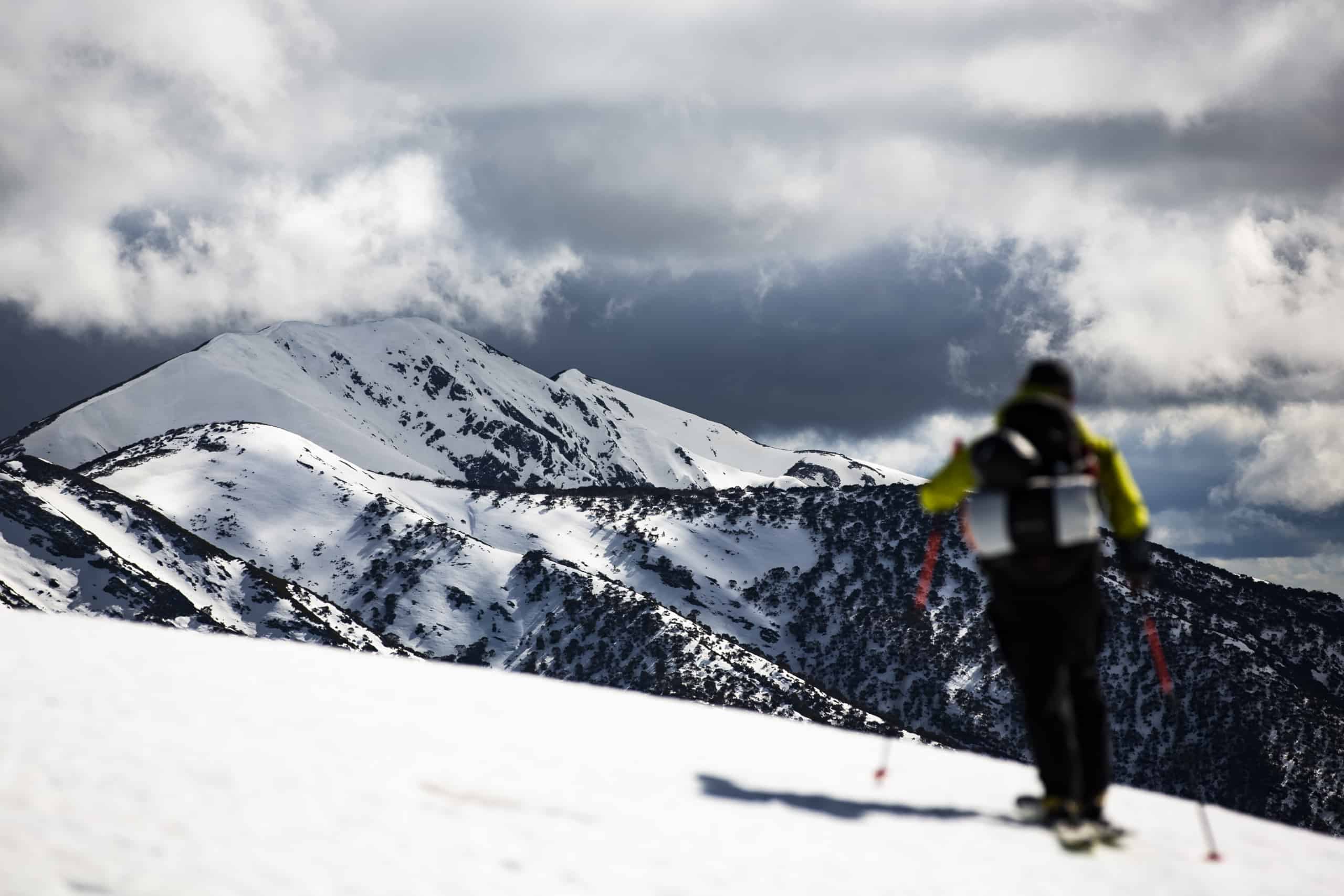
Fortunately come early September restrictions eased for most of Regional Victoria, National Parks were open and access permitted. Together with Simon Murray from Mountain Safety Collective (MSC) and good friend and photographer Dylan Robinson we set out to explore the Roof of Victoria by visiting Mt Feathertop and the state’s highest alpine peak Mt. Bogong.
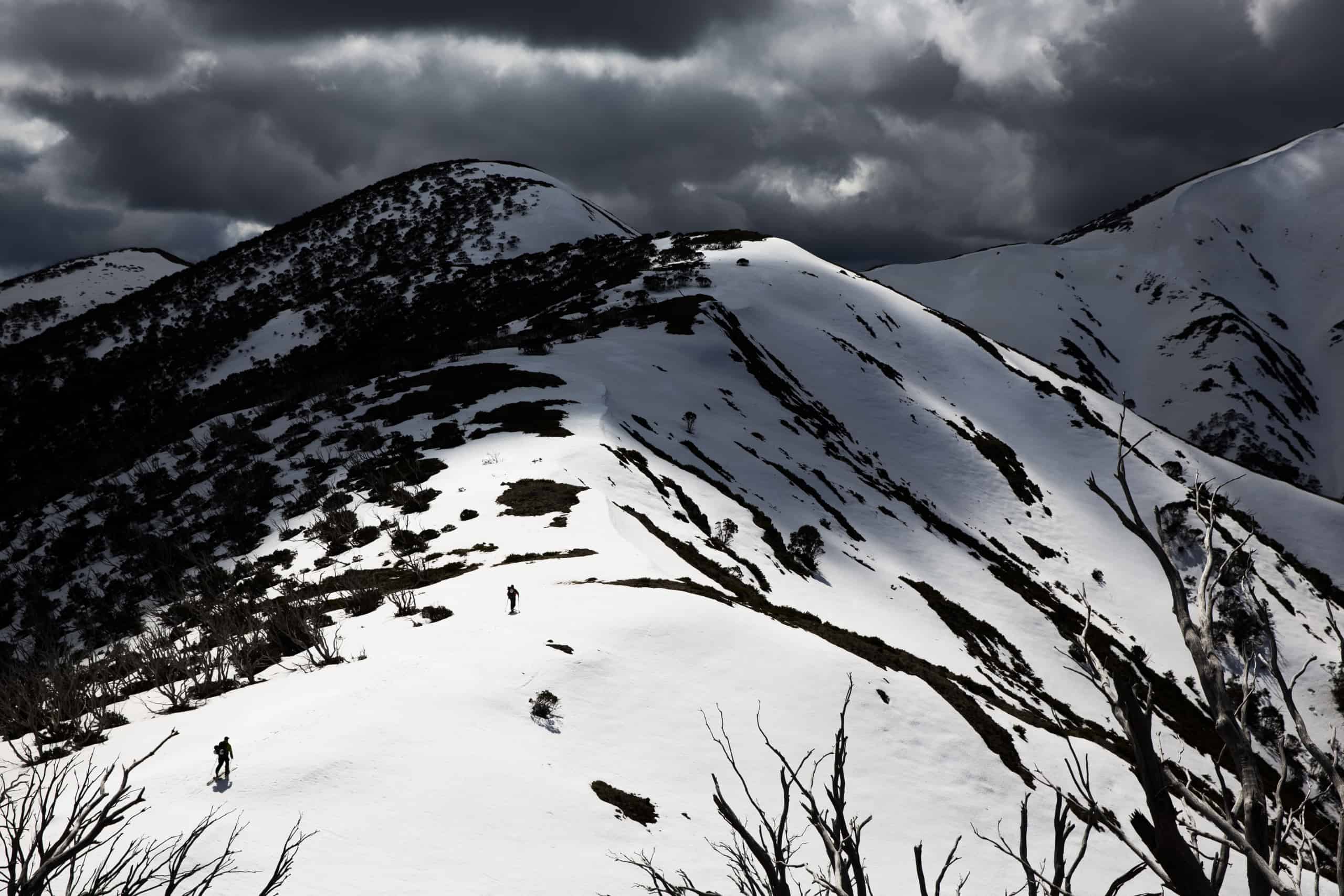
Mt Feathertop, Sept 16-17.
A tight weather window appeared. Whilst following all Covid-safety protocols we rallied for an overnight trip to arguably the states truest Alpine peak. The notion of Australia not having big mountains goes out the window when standing on top of this majestic peak. Make no mistake, this is a big mountain with even bigger consequences if taken for granted. Often plagued by wind and weather in the depths of winter, spring can often be the best time to visit with longer days, warmer temperatures, and less ice to navigate.
After gaining the summit via the 11-kilometre journey along the Razorback Ridge, we set up camp on a sheltered plateau known as the ‘Crow’s Nest’. This central location allowed us to enjoy two great days skiing under partly cloudy skies, friendly temperatures, and perfect surface conditions.
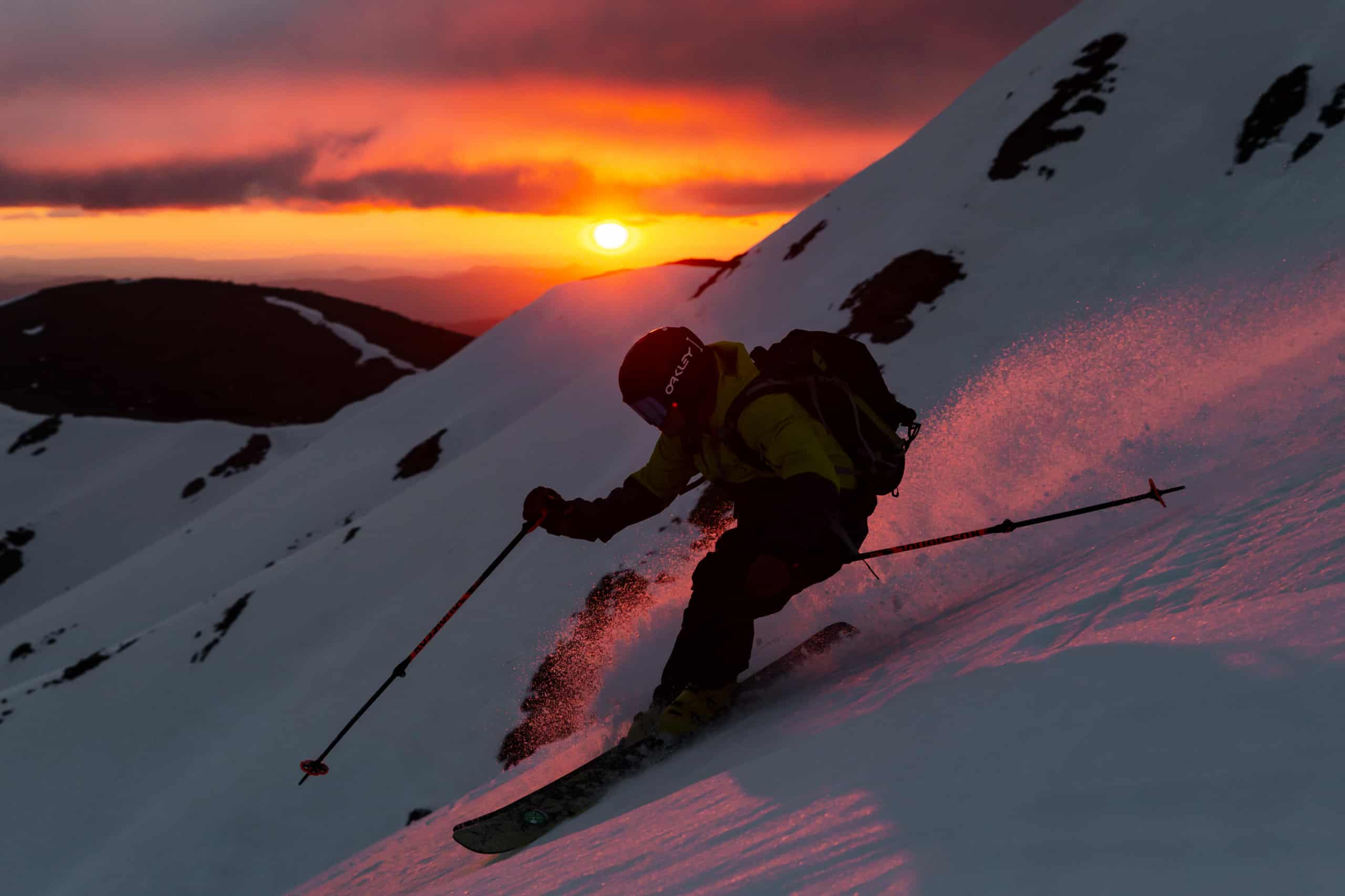
Highlights: Witnessing the stars glisten above the East Face by night as we recounted the days achievements was a sight to see. Waking to a stunning sunrise the following morning with the mountain beaming in the morning light above our tents helped build anticipation for the days adventure. As far as ski objectives go? Getting to ski the long sustained Diamantina Face with perfect snow all the way to camp was a highlight, as well as getting to ski the East Face as temperatures warmed on the second day.
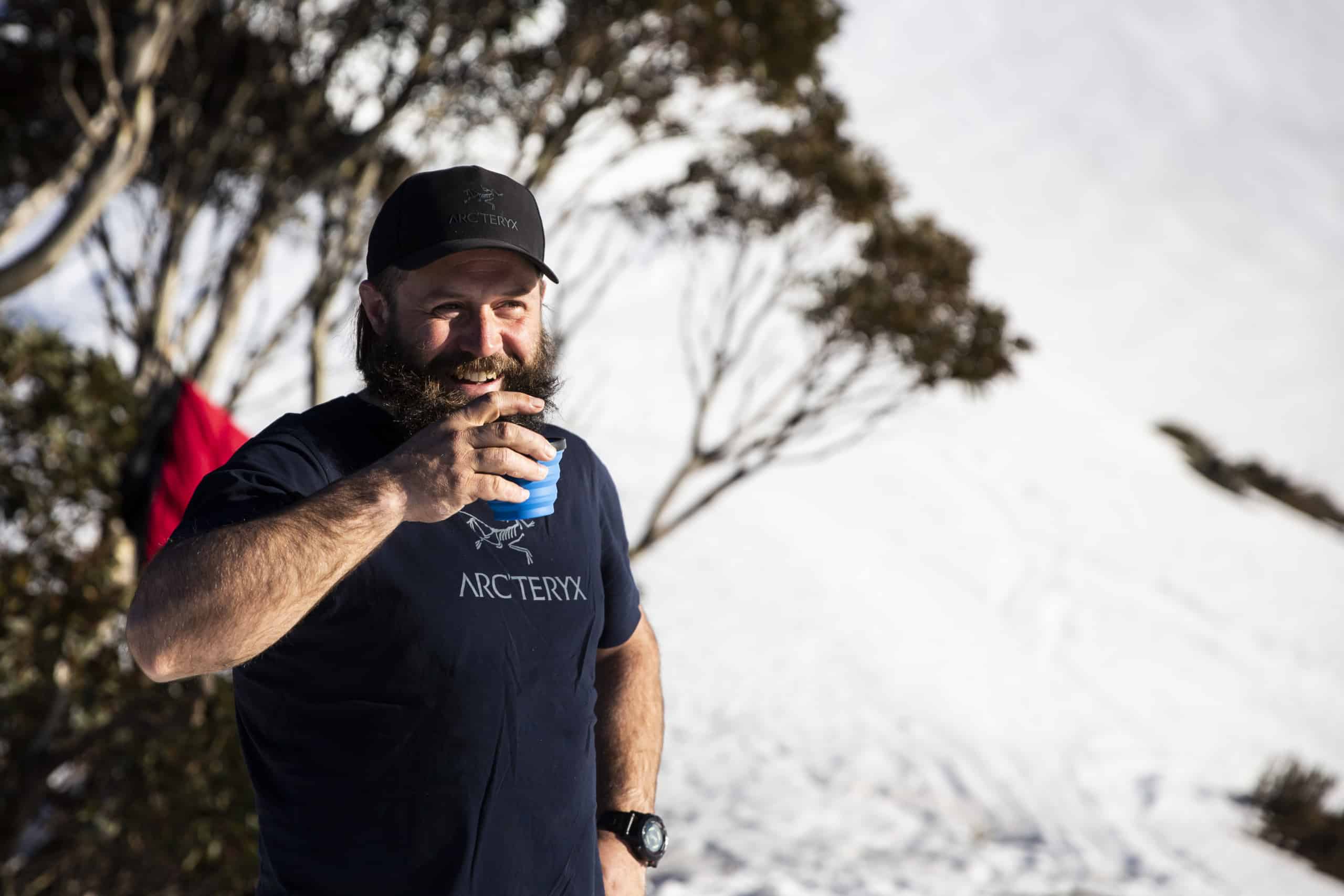
Lowlights: There weren’t any. To beat an incoming weather system a last minute change to our exit strategy was made. This also meant a footwear change which I failed to account for, meaning a blister inducing journey down Bungalow Spur in ski boots (I guess you can’t win them all).
Mt Bogong, Sept 22-23
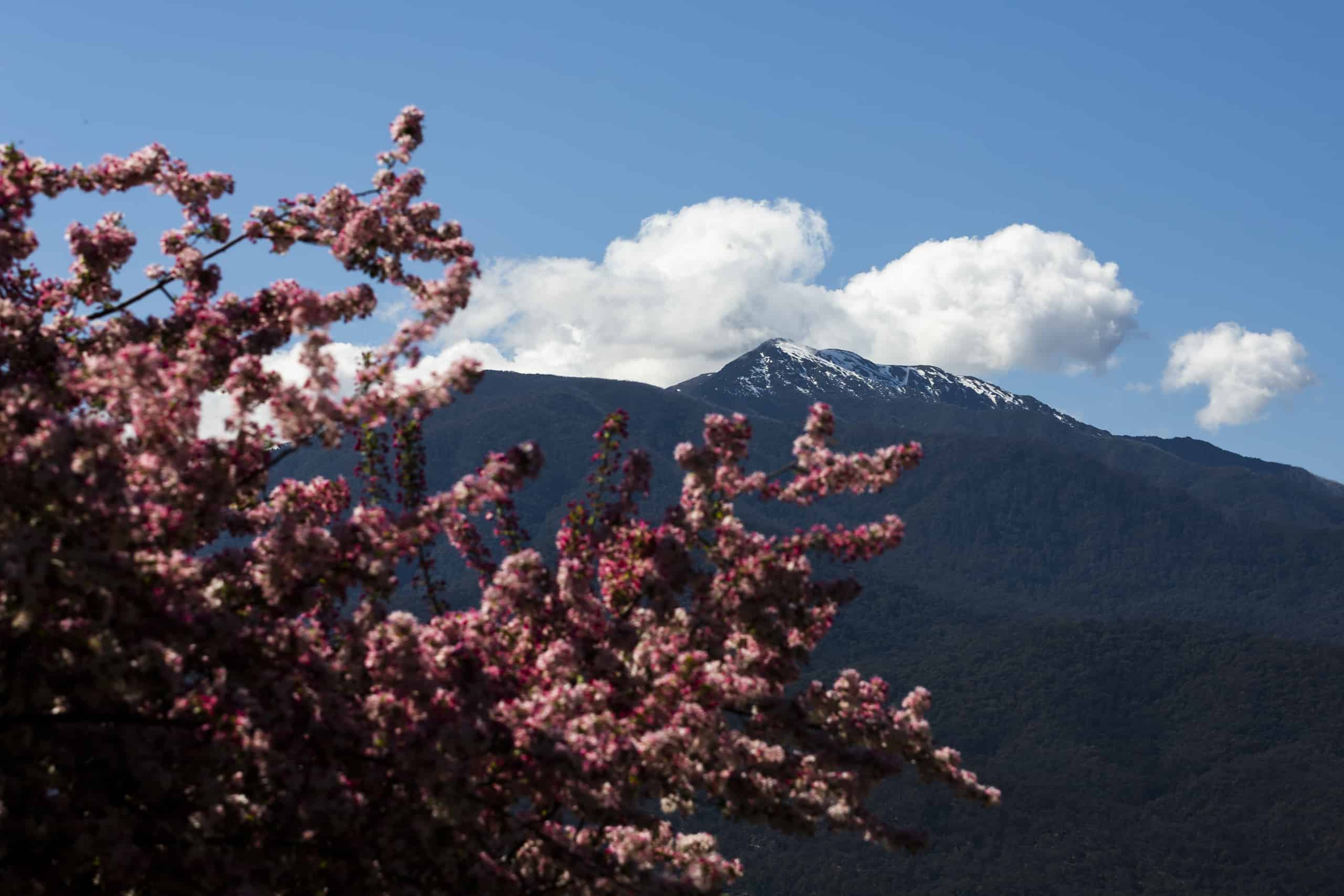
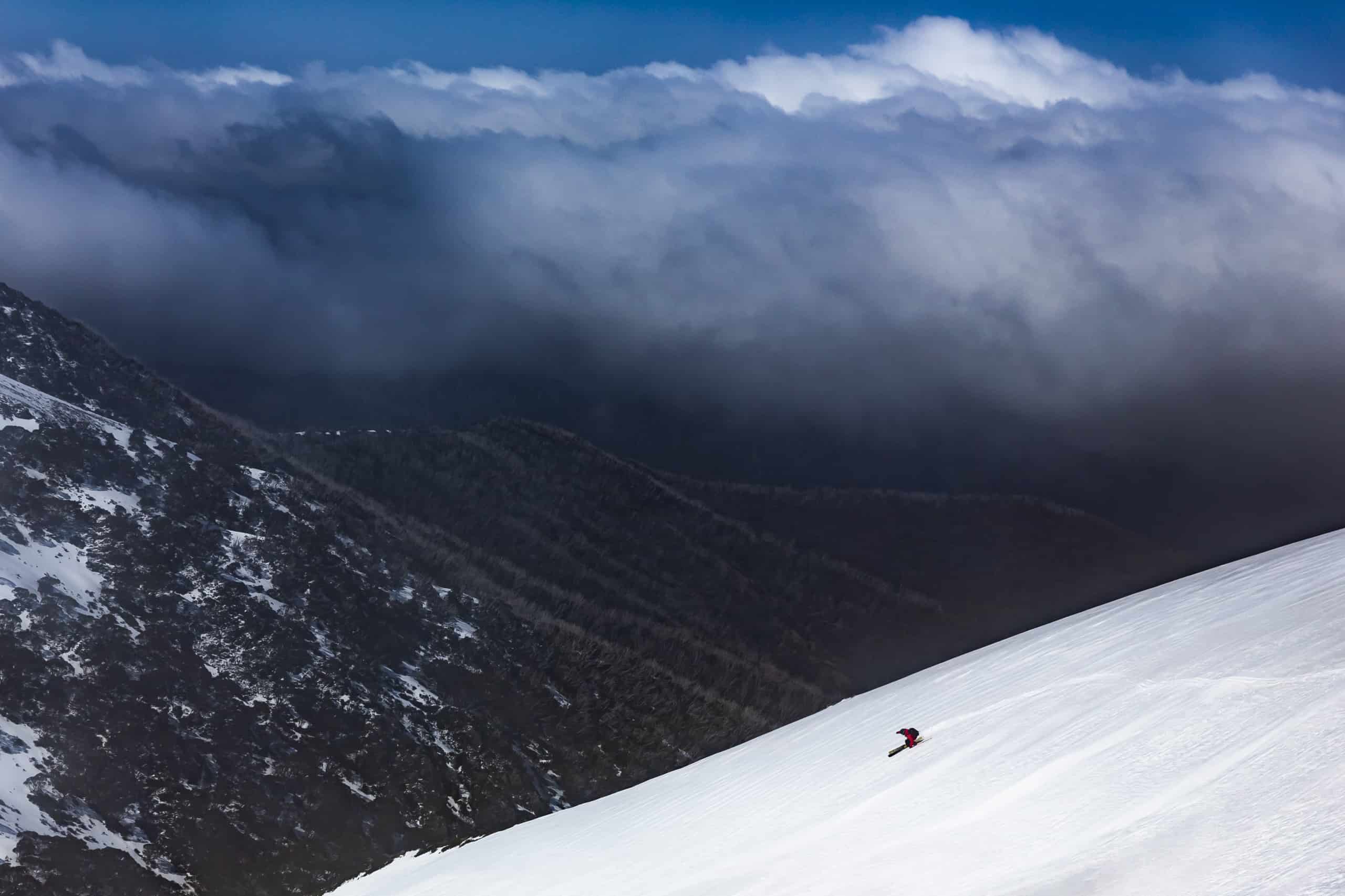
‘Bogong’ in the native Indigenous language literally translates to ‘Big Fella’, the name aptly bestowed upon Victoria’s highest peak by the local Yaitmathong clan. Reaching a height of 1986 metres, the views from the Summit are breathtaking in every direction. With no easy access we decided to ascend from the Camp Creek Gap trail head and climb Eskdale Spur via Michell Hut.
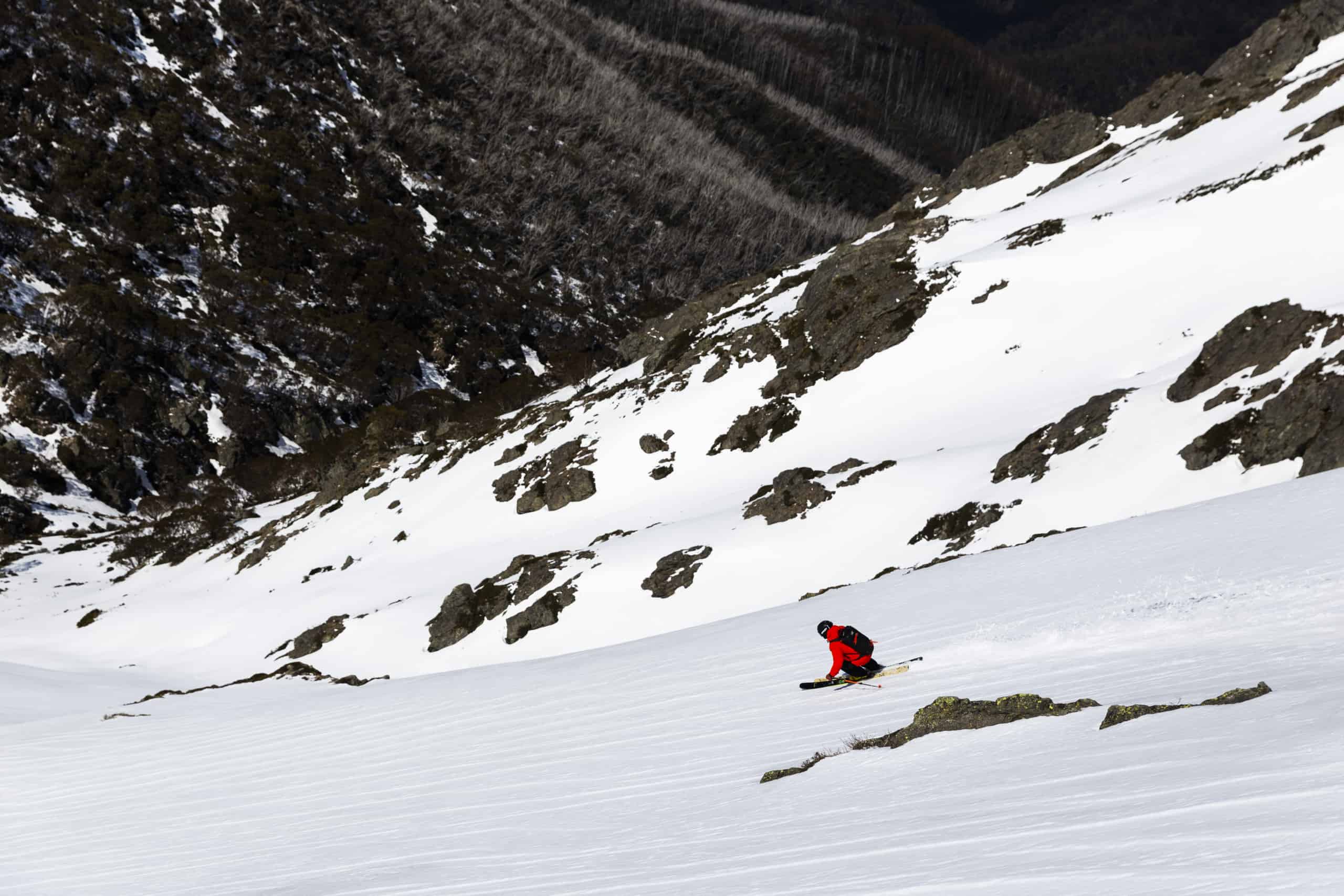
As with all good trip planning it pays to have a plan B and usually C. Even with a favourable forecast the weather in the Aussie Alps can be fickle. Bogong proved this to be the case. Sun, wind, fog and at times poor visibility were all a feature. By the end of the second day strong winds had worn us down and the prospects of a second noisy night on the summit forced us to lower ground to find shelter.
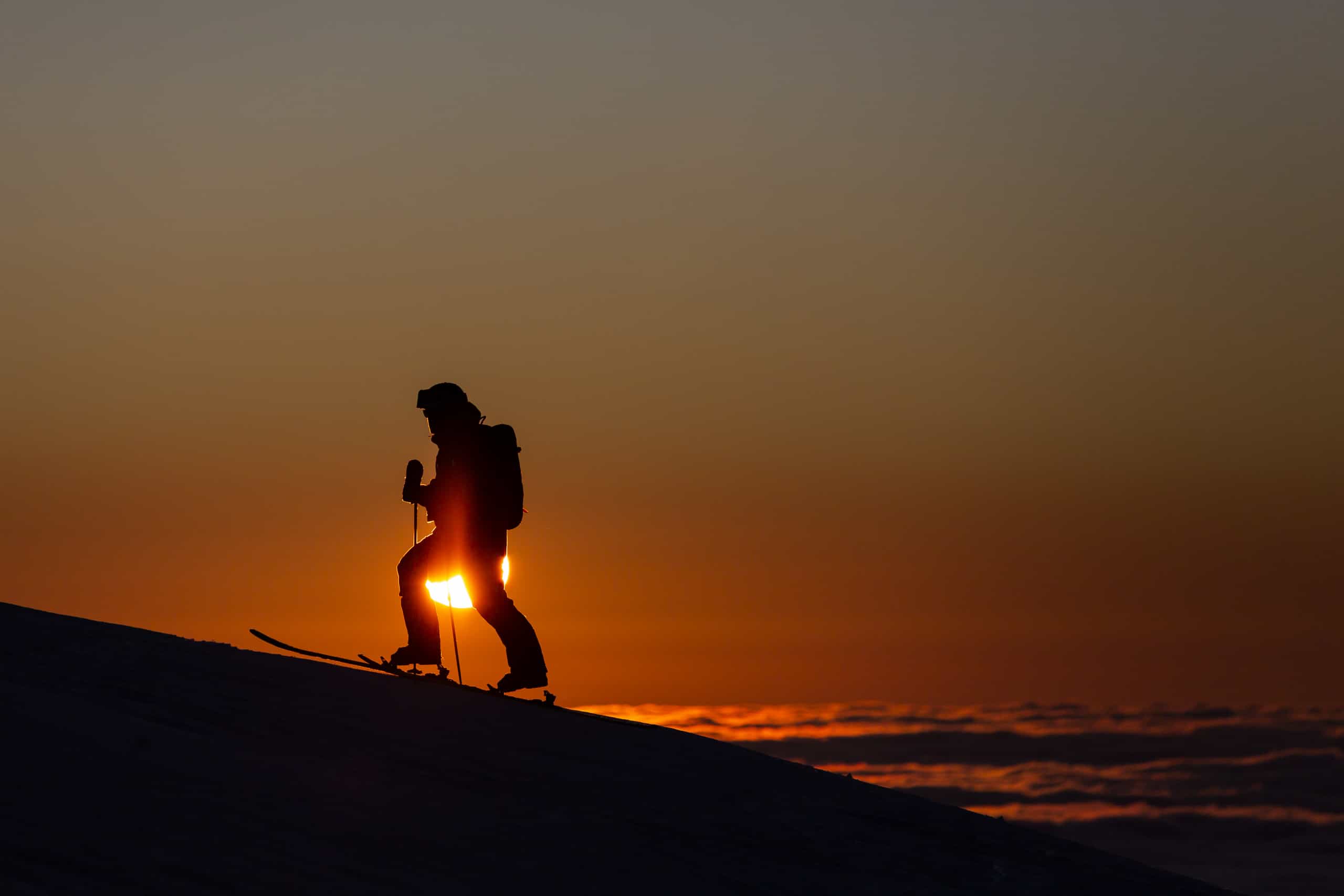
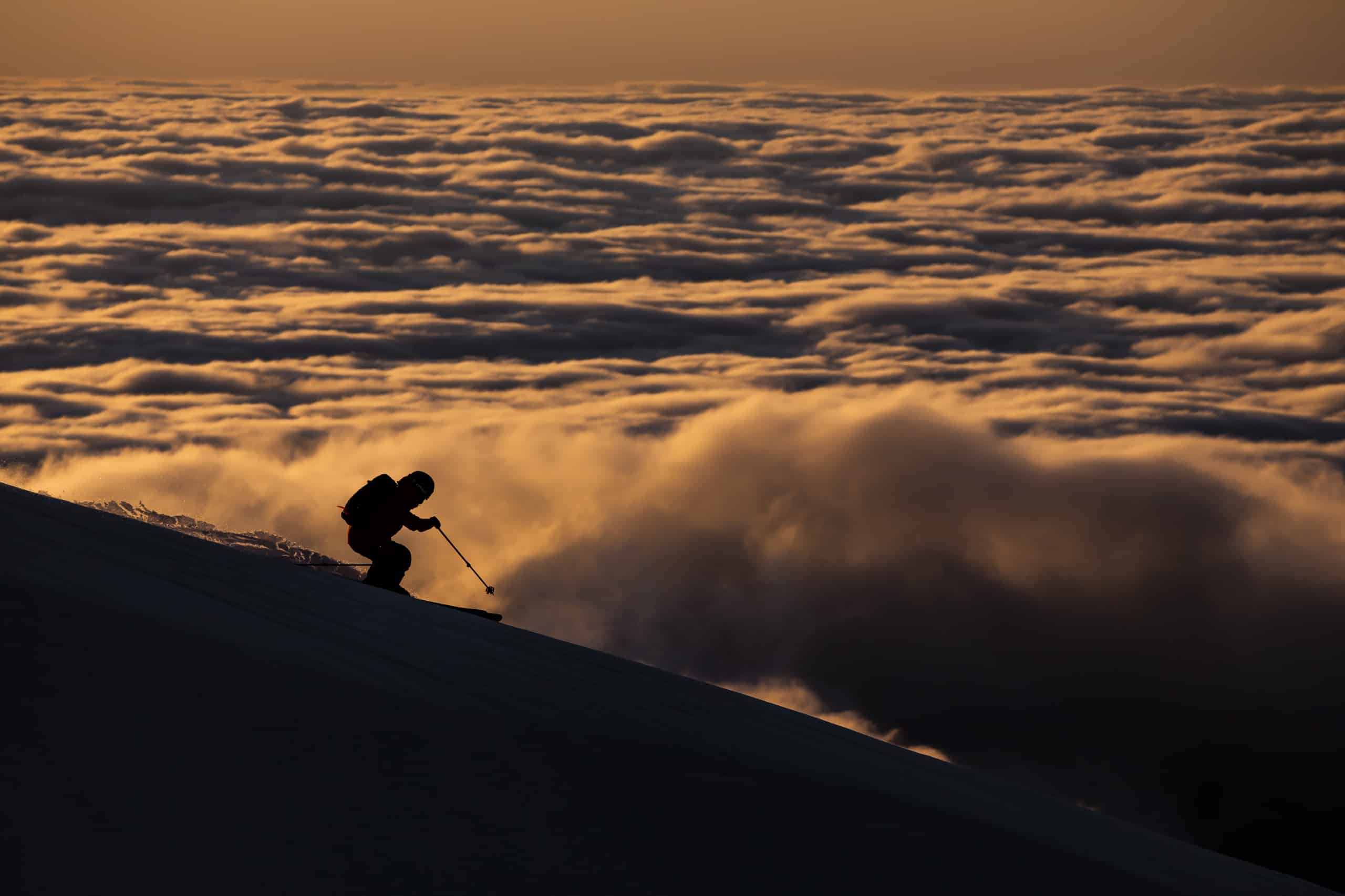
Highlights: With low valley cloud comes contrast and the first night provided maybe the most spectacular sunset I’ve seen in the Aussie Alps. In a case of right place right time, we were fortunate to be on the summit of Victoria’s highest peak to witness it. After being buffeted by wind and cloud that afternoon spirits were fading. That is, until I peered through the tent vestibule at about 5pm only to see the cloud ceiling drop to create the most perfect inversion right on golden hour. A photographer’s dream, for the next hour we scrambled, skied, scrambled and skied again, trying our best to utilise the most pristine light. Sometimes it’s the fleeting moments that make all the effort worthwhile. Bogong was all about those moments.
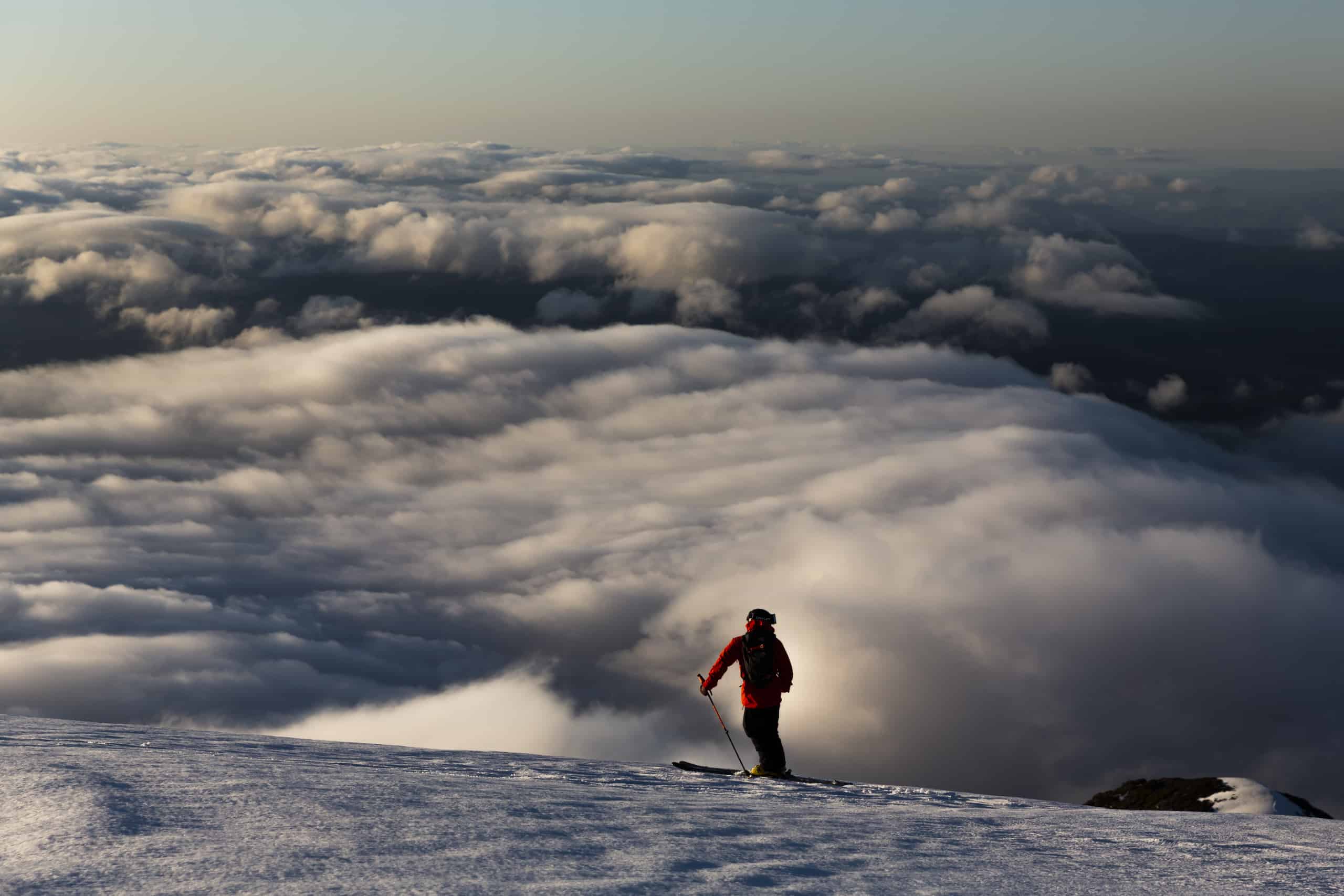
Lowlights: Wind and Fog. Sometimes it’s just not meant to be and retreat is the only option. After being chased to Michell Hut on the second night to escape the wind, we awoke to borderline conditions on the third morning. Although scoring some solid skiing in Cairn Gully the day prior, we were hungry for more. Faced with two choices we could either head up for another windy, potentially foggy borderline day, or listen to the mountains and leave it for another day. The latter it would be.
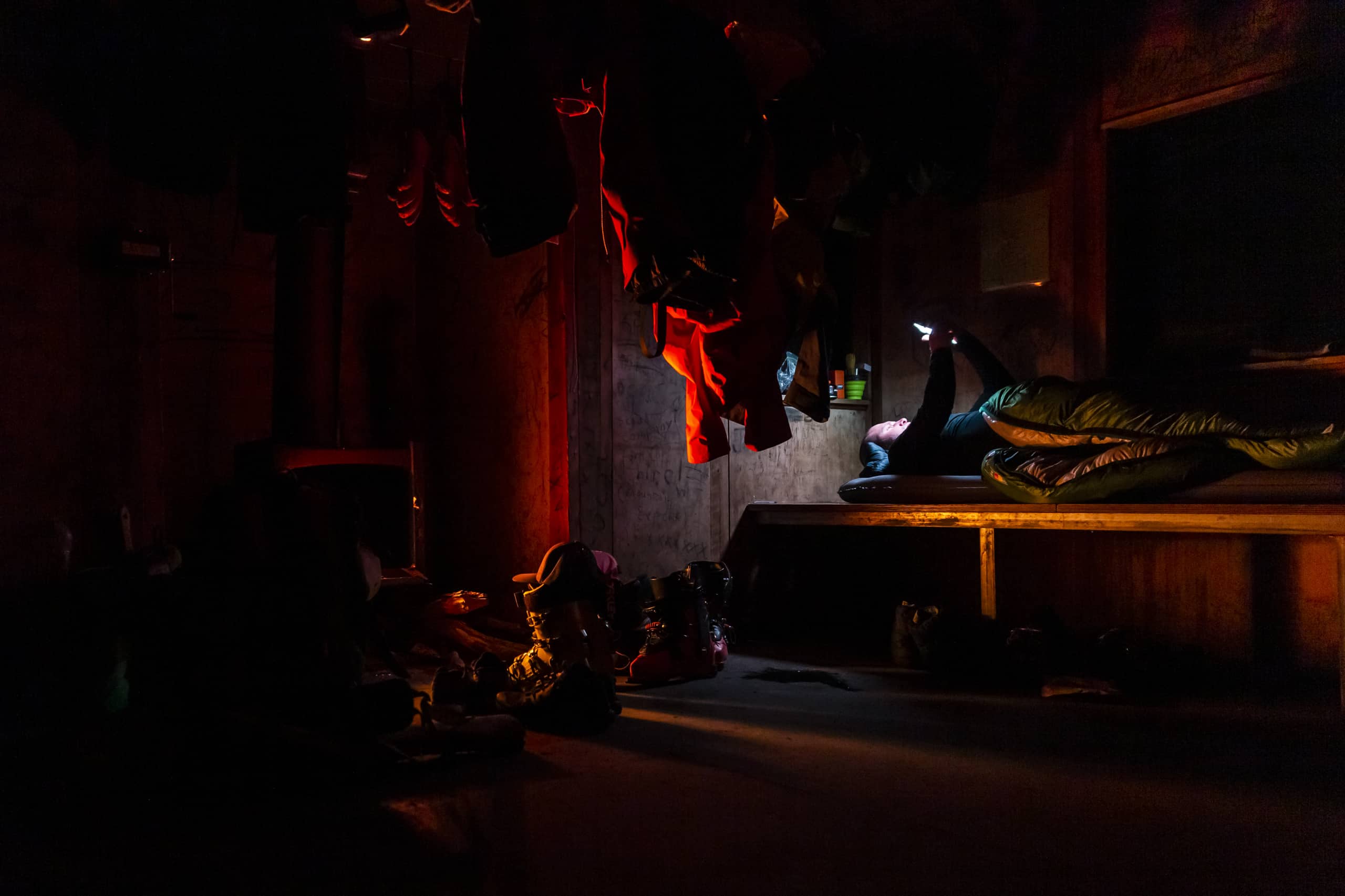
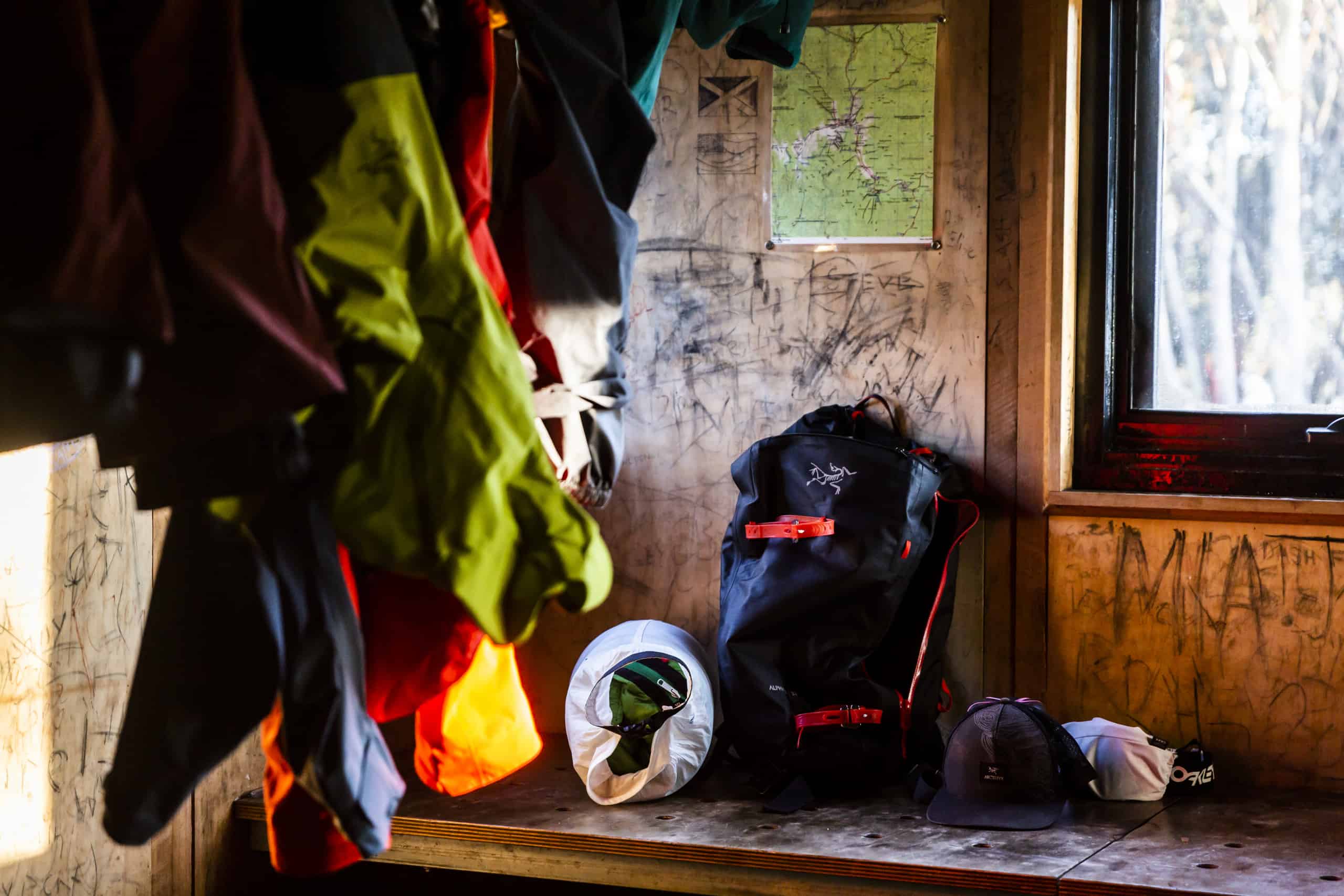
A word on safety:
It’s worthy to note a lot of planning goes into a successful and safe backcountry trip. One of the key aspects that comes into play especially in spring is assessing snow surface conditions and deciding on which aspects are ready to ski and when.
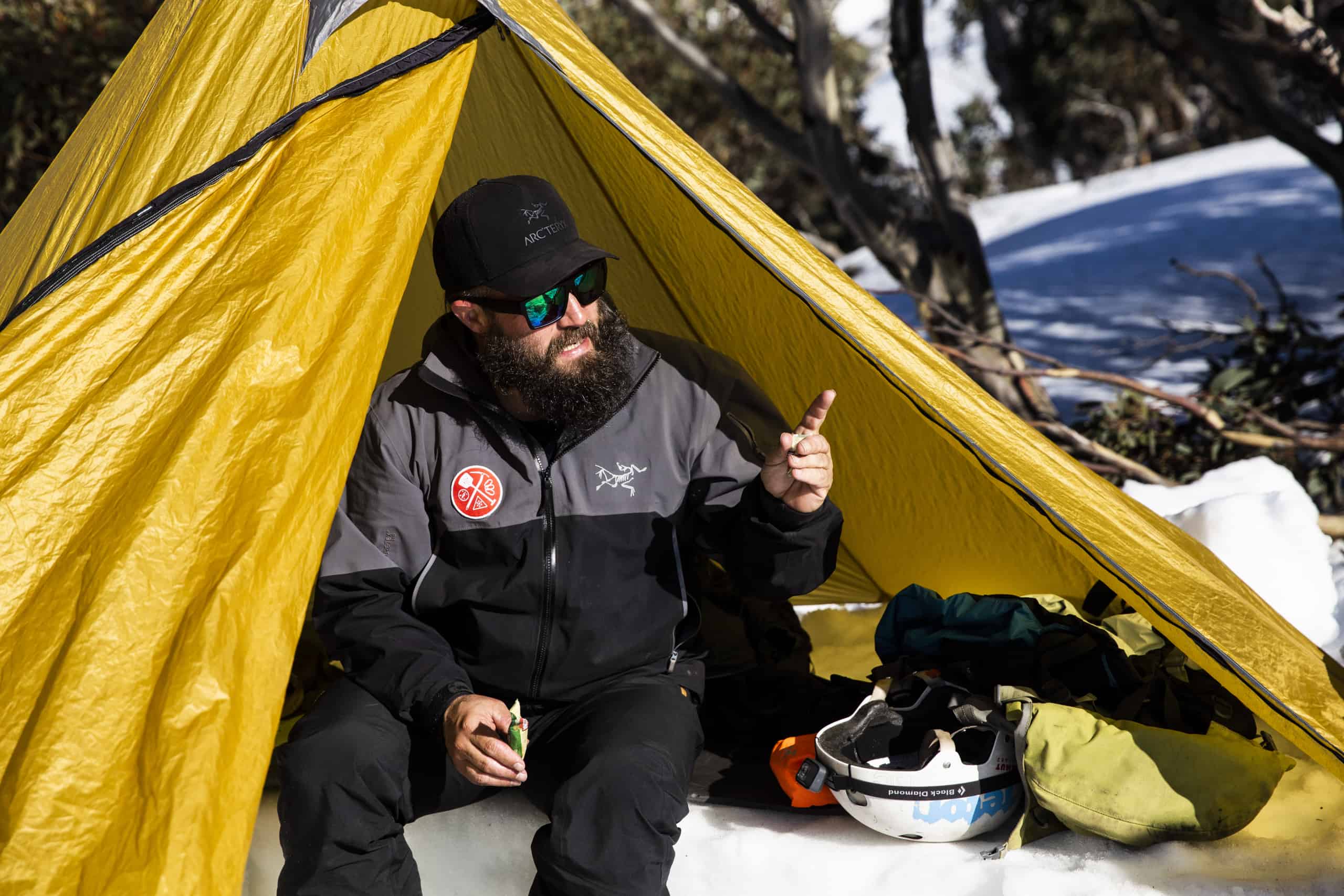
Mountain Safety Collectivehave put a lot of time and research into evaluating this process and we utilise this knowledge extensively to help us make better terrain choices.
‘Four Fingers’ This approach allows a better estimation of when a slope is ready to ski by measuring snow temperature in 30-minute intervals from dawn and using this data to project a time estimate. Aspect and elevation are key considerations in this process. When the surface accepts the push of a flat gloved hand beyond the second knuckle it will likely respond well to a ski/board edge, making ski touring more manageable and holds enough structure to be able to self-arrest a fall with poles or an ice-axe.
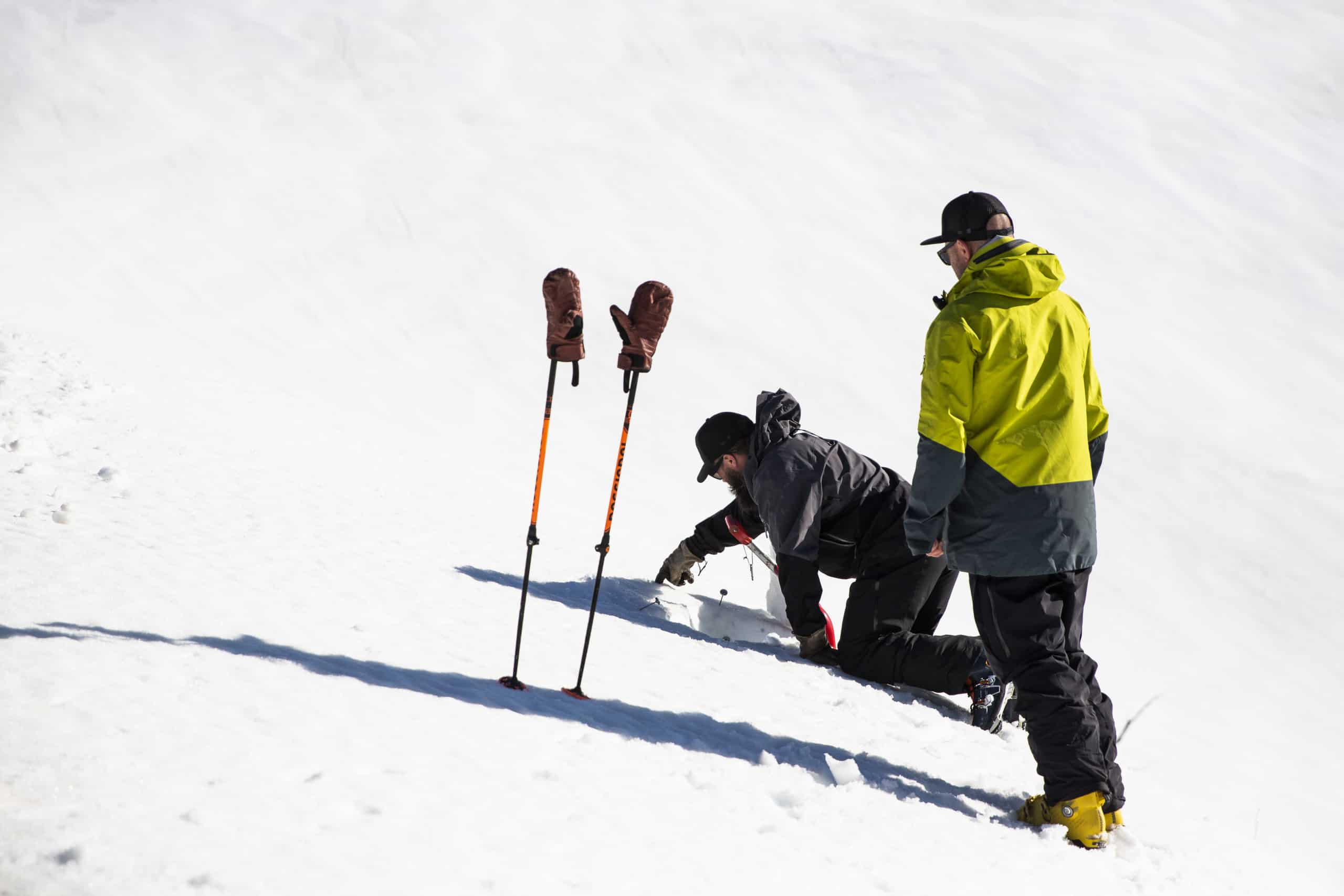
Light and Shade: Avoid the shade and follow the sun for better spring turns. Snow temperature can dramatically vary depending on whether it’s a solar or shaded aspect. Within the same run the surface can go from soft and forgiving under the sun’s rays to firm and frozen just metres away in the shade.
For more information on this process and up to date forecasts and advisories for the Australian Backcountry, jump over to mountainsafetycollective.org for all the latest backcountry condition information from June though October.
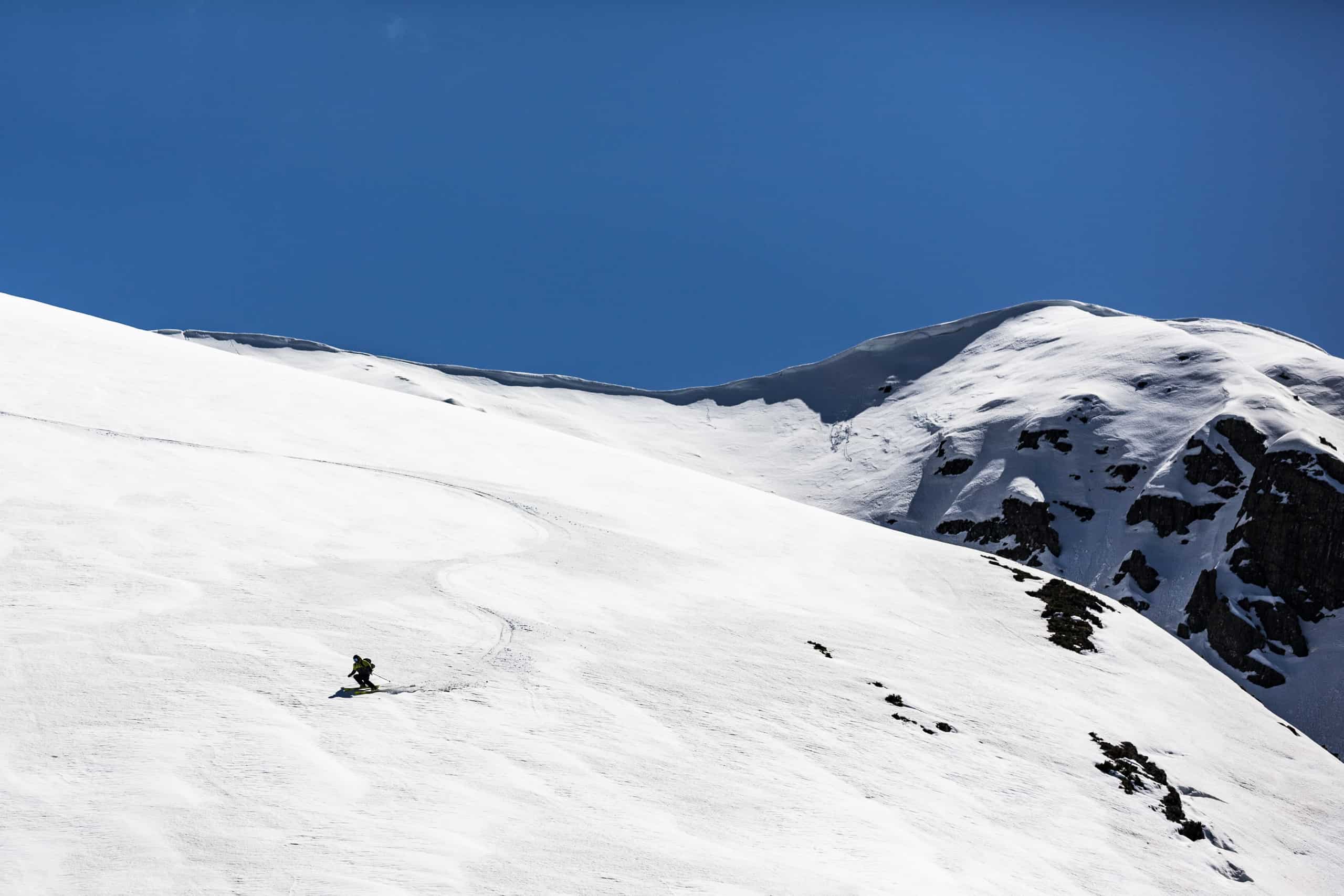
So, with the Australian snow season coming to a close for another year it seems like the perfect time to reflect upon a season that was. A season that produced a roller coaster of emotions and not without its challenges. On a personal level, huge thanks go to Dylan and Simon for their amazing work and creativity in the backcountry this spring. For our fortunate regional visitors, September offered some great days for ski touring. Although our National Parks are for everyone and it wasn’t the same without those who couldn’t make it. Next year we can look forward to welcoming back all of our metropolitan and interstate winter adventurers to the Roof of Victoria to enjoy Out the Back of Beyond.
Thanks to Arcteryx Aus/NZ ( @arcteryxausnz) for making the trip possible.


